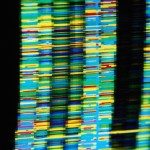Lien vers Pubmed [PMID] – 18184716
J. Virol. 2008 Mar;82(6):2792-801
Kaposi’s sarcoma-associated herpesvirus (KSHV) ORF57 facilitates the expression of both intronless viral ORF59 genes and intron-containing viral K8 and K8.1 genes (V. Majerciak, N. Pripuzova, J. P. McCoy, S. J. Gao, and Z. M. Zheng, J. Virol. 81:1062-1071, 2007). In this study, we showed that disruption of ORF57 in a KSHV genome led to increased accumulation of ORF50 and K8 pre-mRNAs and reduced expression of ORF50 and K-bZIP proteins but had no effect on latency-associated nuclear antigen (LANA). Cotransfection of ORF57 and K8beta cDNA, which retains a suboptimal intron of K8 pre-mRNA due to alternative splicing, promoted RNA splicing of K8beta and production of K8alpha (K-bZIP). Although Epstein-Barr virus EB2, a closely related homolog of ORF57, had a similar activity in the cotransfection assays, herpes simplex virus type 1 ICP27 was inactive. This enhancement of RNA splicing by ORF57 correlates with the intact N-terminal nuclear localization signal motifs of ORF57 and takes place in the absence of other viral proteins. In activated KSHV-infected B cells, KSHV ORF57 partially colocalizes with splicing factors in nuclear speckles and assembles into spliceosomal complexes in association with low-abundance viral ORF50 and K8 pre-mRNAs and essential splicing components. The association of ORF57 with snRNAs occurs by ORF57-Sm protein interaction. We also found that ORF57 binds K8beta pre-mRNAs in vitro in the presence of nuclear extracts. Collectively our data indicate that KSHV ORF57 functions as a novel splicing factor in the spliceosome-mediated splicing of viral RNA transcripts.

